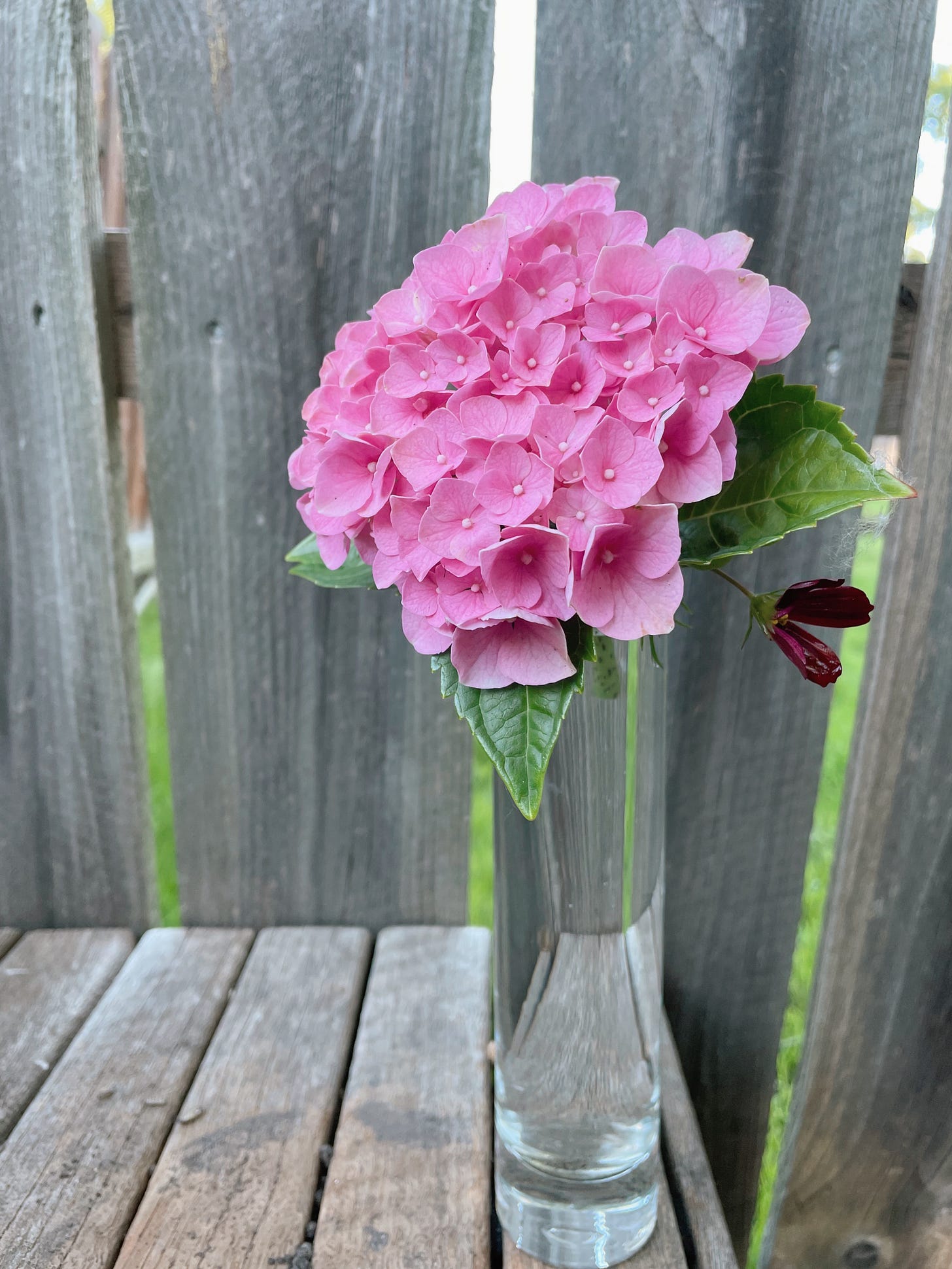Endless cloudy skies and pouring rain dominate our early June weather. I’ve had to relearn how to garden with frequent rain, and it presents a real challenge with flowers growing in the garden. While plants love all the rain, a few flowers have begun to rot— their roots are too wet. My vibrant blue delphinium plants, for example, have succumbed to a fungus brought by too much rain; the zinnia grow slowly, overwhelmed by moisture and cool weather. All four basil varieties in the kitchen garden protest the rain and cool weather by growing spindled branches and thin leaves.
Don’t worry, a few plants seem to love the wet weather pattern, including my lemon balm, oregano, mint (the herbs that can grow on Mars and survive), hostas and salvia (when the bunnies ignore them), and yellow loosestrife, which blooms happily even with wet roots.
An early bouquet of indoor-sown snapdragons. I always interplant snapdragons in the kitchen garden around cool-weather crops, such as lettuce, to provide consistent blooms and attract pollinators.
Hot pink yarrow and fluffy snow-on-the-mountain fill two garden beds near the house. Their wispy, long branches and delicate petals make for a whimsical wildflower bouquet.
Yarrow works well as a single-flower bouquet in a small glass dish. While it has healing properties, I love growing this flower for its bright color.
I added an “Endless Summer” hydrangea to the garden this summer. My daughter claimed this blossom for her own.
My aunt gave me several purple iris a few summers ago, but this is the first season they’ve blossomed fully, likely because we’ve had adequate moisture. The garden bed where these iris bloom now collects rain water and worms.
I overwintered approximately twenty rosemary cuttings from last year’s kitchen garden. I planted the ten strongest cuttings into large ceramic containers and placed them on either side of a wooden trellis in the kitchen garden. Despite the rain, the rosemary continue to grow prolifically.
Three years ago, I purchased feverfew from a mid-Atlantic seed farmer. I’d never grown feverfew before, but thought they would add a delicate detail to summer bouquets. Three years later, the plants still produce cream-colored flowers that make beautiful bouquets. The leaves of this plant are edible, but I only cultivate it for its floral properties.
See a photo you like? Purchase photography in my online shop. And, let me know what you think of this issue of Rewind. See you at the end of the month.
-Betsy










